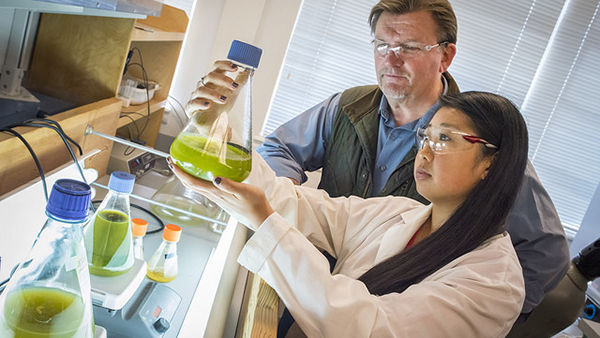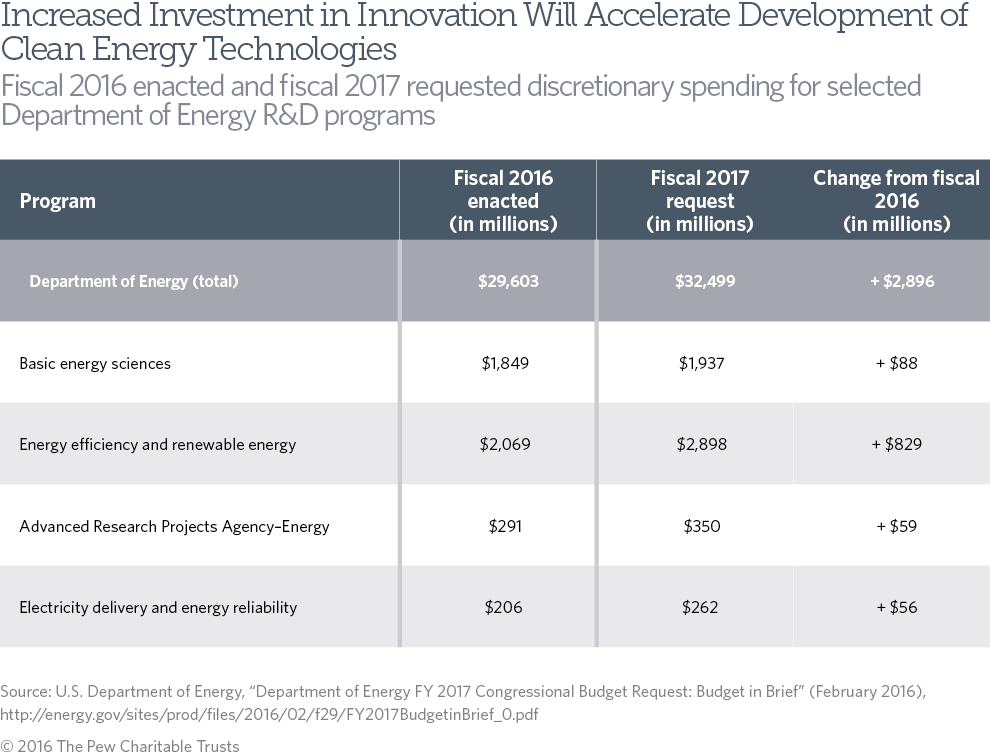2017 White House Budget Proposal Would Fund Clean Energy Innovation
Increased Department of Energy funding will accelerate research and development
On Feb. 9, the White House released its fiscal year 2017 budget request that included greater investment in cutting-edge clean energy technologies. The increased funding would support programs within the Department of Energy that focus on basic scientific research, electric grid modernization, advanced manufacturing, vehicle and energy efficiency, and renewable power generation. In the coming weeks, Congress will begin constructing budgets for the various federal agencies, including the clean energy research and development programs. They should make strong investments in the technologies of the future.
The Obama administration’s proposal for energy R&D represents an essential first step in Mission Innovation, a global initiative announced in November to accelerate and expand the creation of clean technologies. As part of that effort, the United States and 19 other countries committed to double their public sector investments in renewable and efficient technologies over the next five years.
 © U.S. Department of Energy
© U.S. Department of EnergyThe national laboratories, including Lawrence Berkeley (above), are key pieces in the U.S. clean energy innovation ecosystem.
Congress should approve the president’s budget requests for DOE programs that target greater R&D investments for fiscal 2017:
- $1.8 billion for the Basic Energy Sciences program, which helps lay the groundwork for new energy technologies and supports testing hubs, including the national laboratories, Energy Frontier Research Centers, and energy innovation hubs.
- $350 million for the Advanced Research Projects Agency–Energy (ARPA-E), which invests in early stage, high-risk, high-reward technologies. As of February 2015, 141 of the program’s project teams had completed their funded work, and 34 had attracted more than $850 million in additional private sector funding.
- $2.9 billion for the Office of Energy Efficiency and Renewable Energy, which operates programs that support innovation in electricity generation from renewable sources, new vehicle and fuel technologies for sustainable transportation, enhanced end-use energy efficiency, and advanced manufacturing. This includes money to launch another National Network for Manufacturing Innovation institute to deploy new processes in support of clean energy technologies.
- $262 million for the Office of Electricity Delivery and Energy Reliability, which supports R&D related to grid modernization and clean energy integration. The agency published the first installments of the Quadrennial Energy Review and Quadrennial Technology Review in 2015. These studies identified needs and opportunities for investing in this critical infrastructure.

In addition to optimizing discretionary spending for R&D programs that support the objectives of Mission Innovation, the agency is targeting new mandatory expenditures, including more than $1.3 billion to help jump-start the 21st Century Clean Transportation System and $150 million for ARPA-E to direct toward large-scale, complex energy challenges.
Half of newly installed electric generating capacity worldwide is expected to come from clean sources by 2030, so developing and commercializing next-generation technologies is vital to ensure that the U.S. maintains a competitive position in this rapidly growing global market. A robust R&D budget that helps spur innovation in energy technologies will create more economic opportunities, benefit the environment, and enhance energy security.
As policymakers consider funding levels for fiscal 2017, they should support the important role government plays in facilitating promising new energy technologies. Federal funding for innovation led to such discoveries as nuclear power, solar photovoltaics, hydraulic fracturing, smart grids, and more. Targeted investments not only generate breakthroughs and reduce technology costs, but also create jobs and markets and increase the nation’s gross domestic product.
Phyllis Cuttino directs The Pew Charitable Trusts’ clean energy initiative.






